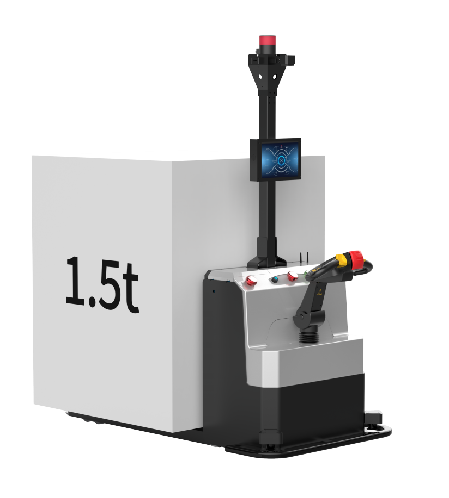In the realm of automation and human-machine collaboration, ensuring safety measures is paramount for manufacturing enterprises. To guarantee the safety and reliability of industrial application robot solutions, several essential steps should be taken.
Integrating Robots in Manufacturing and Logistics
The manufacturing industry is increasingly integrating robots across factory operations, with more manufacturing and logistics processes becoming fully automated. The scope of human-robot collaboration is expanding, necessitating robust safety measures to ensure reliable performance.
Manufacturers, suppliers, integrators, and operators need to evaluate and validate robot compliance based on a variety of standards and specific application requirements. One core standard is EN ISO 10218:2011-Safety Requirements for Industrial Robots, which covers international and European safety standards for industrial robots.

Key Safety Aspects for Industrial Robots
Successful certification of industrial robots, robotic systems, and control systems requires adherence to all applicable technical guidelines and standards. Testing should include, but is not limited to, the following aspects:
Heavy Load and High Speed
Unintended Start-Up or Behavior
Collisions with Workpieces or the Environment
Workpiece Ejection
Presence of Personnel in Critical Areas
Safety Requirements for Collaborative Robots
When human employees work alongside robots, safety becomes the utmost priority. Robot manufacturers face extensive safety requirements reflected in numerous technical guidelines and standards. Collaborative robot systems, which combine manual and automated assembly operations into a hybrid system, can enhance process efficiency, product quality, and reduce physical strain and repetitive tasks for humans.
The International Federation of Robotics highlighted in its 2020 report that robots perform many "4D" tasks (dull, dirty, dangerous, and delicate), thereby improving worker health, safety, and job satisfaction.
While ISO 10218:2011 provides guidance on using collaborative robots, it is widely acknowledged that improvements are needed. Consequently, the ISO/TS 15066 technical specification-Robots and Robotic Devices-Collaborative Industrial Robots, was released in 2016. Ensuring an unobstructed environment for employee safety is a fundamental requirement of collaborative applications, adhering to the technical specifications of this standard.
ISO/TS 15066 details the "speed and separation monitoring" and "power and force limiting" methods for collaborative work. This includes recommendations for the "biomechanical limits" of pain thresholds for specific body parts. Risk assessments conducted according to EN ISO 12100 can also define safety requirements for cobot applications and work environments.
An essential component of collaborative robot applications is the robot end effector. Handling any project is impossible without it, but it does pose a potential risk. Therefore, the clamping force required and the special handling of workpieces are crucial for safety. ISO TR 20218-1 outlines the interface and safety requirements for such gripper systems.

Safety of Industrial Mobile Robots
Mobile robots significantly contribute to automation and optimization of logistics processes. They provide continuous 24/7 service and can be flexibly assigned to various applications, enhancing efficiency and productivity.
Automated Guided Vehicles (AGVs) create a ground conveyor network that follows fixed routes, typically along wires or magnets embedded in the floor. They play a crucial role in automating processes and material transportation across various industries, including manufacturing and logistics. In smart factories and Industry 4.0 environments, AGVs are particularly vital for continuously improving internal logistics efficiency. However, their diverse applications pose significant challenges for manufacturers and system integrators.
Autonomous Mobile Robots (AMRs) are more sophisticated, equipped with sensors and powerful onboard computers, enabling them to navigate dynamically using maps. They can recognize and react to obstacles, safely performing their duties in busy environments. The combination of AGVs or AMRs with collaborative robots requires particularly stringent safety measures.
Due to their ability to provide continuous 24/7 service and flexible assignment to various applications, AGVs and AMRs greatly contribute to efficiency and productivity. While their industrial applications may vary, the subsystems of AGVs and AMRs are fundamentally similar.
Industrial Mobile Robots (IMRs) encompass AGVs, AMRs, and "industrial manipulators" (robots). Specific market requirements, such as the ANSI/RIA R15.08-Safety Standard for Autonomous Mobile Robots in the United States, and Parts 1 and 2 of ISO 10218, must be considered.
In the European Economic Area, industrial mobile robots must comply with the Machinery Directive, which aligns with the UK's 2008 Machinery (Safety) Regulations. This directive requires task-based risk assessments, guided by ISO 12100-Safety of Machinery: General Principles for Design-Risk Assessment and Risk Reduction, although it does not specifically mention collaborative applications.

Ensuring Comprehensive Safety
As manufacturing and logistics processes become increasingly automated, often assisted by industrial robots and AGVs, enhanced robotic capabilities drive innovation and new services. Depending on the task and chosen solution, robots can collaborate with users or operate fully autonomously.
The rise of human-machine collaboration has expanded automation possibilities, prompting manufacturing enterprises to integrate more robots within factories. Naturally, safety is a prerequisite for robot usage, as system failures can have severe consequences for personnel, equipment, and operations. Despite the dispersed nature of robot safety requirements, combining established standards and industry best practices can ensure the safety of robotic solutions. Ensuring the overall safety of robotic solutions is a comprehensive task, drawing on technologies from multiple disciplines.
Please click on the link below to read more:
Introducing The Flash Food Delivery Robot
Introducing The Nurse Hospital Delivery Robot
Introducing The OLED Advertising Robot: A Cutting-Edge Solution For Modern Advertising
Would you like to know more about robots:https://www.reemanrobot.com/
robot mop,mopping robot,vacuum cleaner robot,clean robot,commercial cleaning robot,floor cleaning,sweeper robot,robots cleaning,vacuum robot,cleaning robot,wet and dry robot vacuum cleaner,commercial mopping robot,sweeping robot ,uv-c robot vacuum cleaner,floor cleaning robot,robot cleaner,floor mopping machine,robot mop cleaner,vacuum cleaner,robot vacuum mop,vacuum cleaning robot,mop robot,robot cleaner vacuum,cleaner mop robot,uvc robot cleaning,cleaning robots smart vacuum,cleaning robot commercial,intelligent cleaning robot,commercial mop robot
